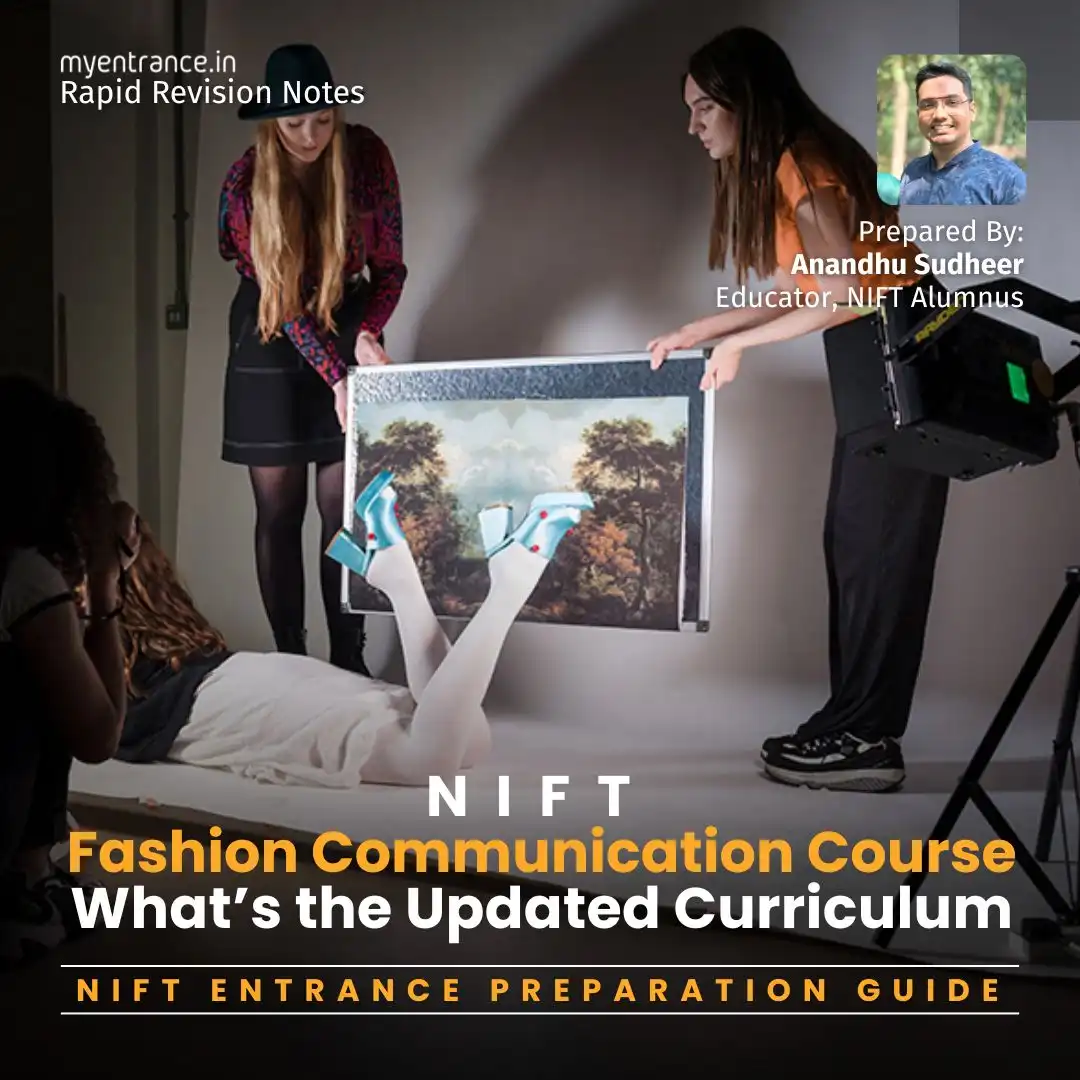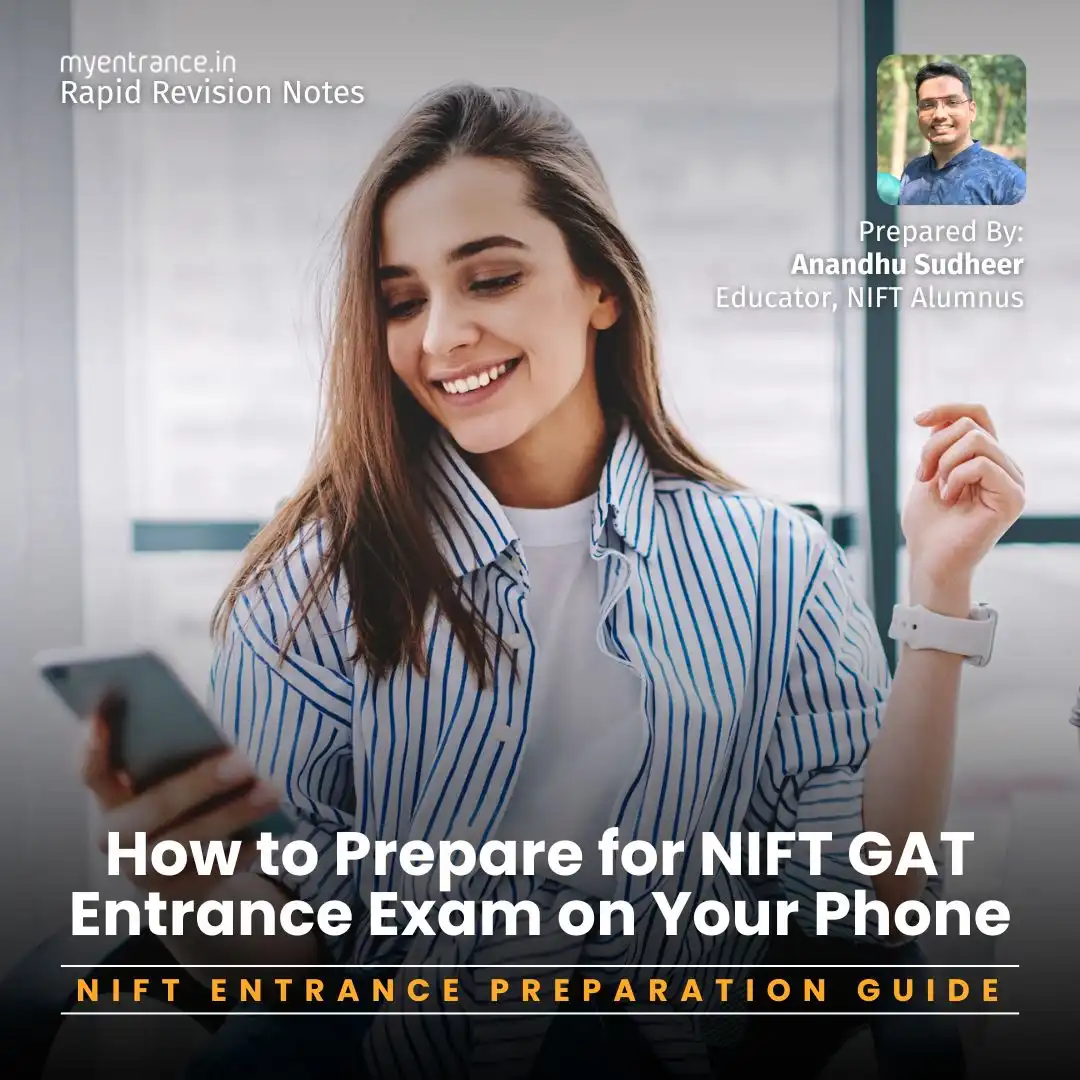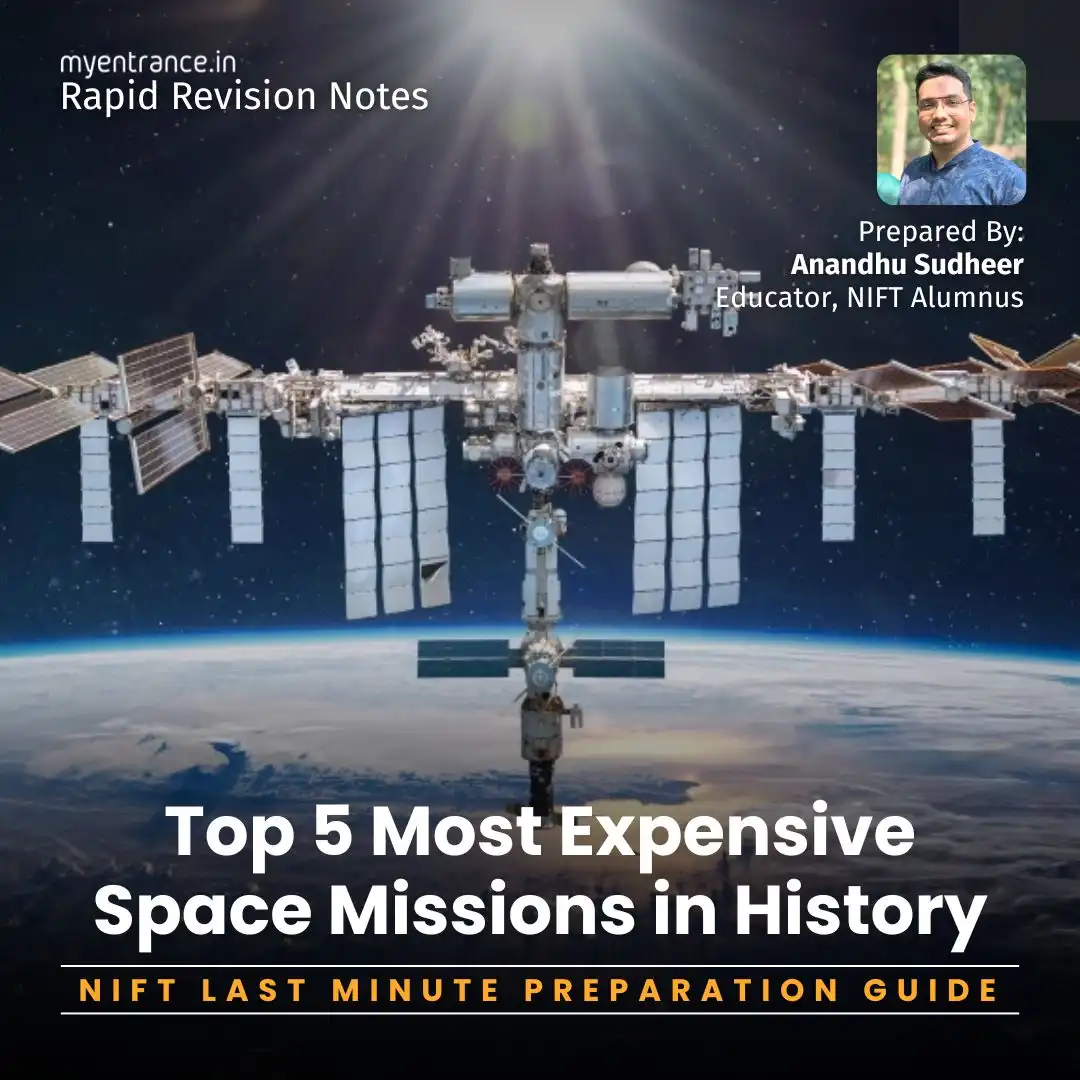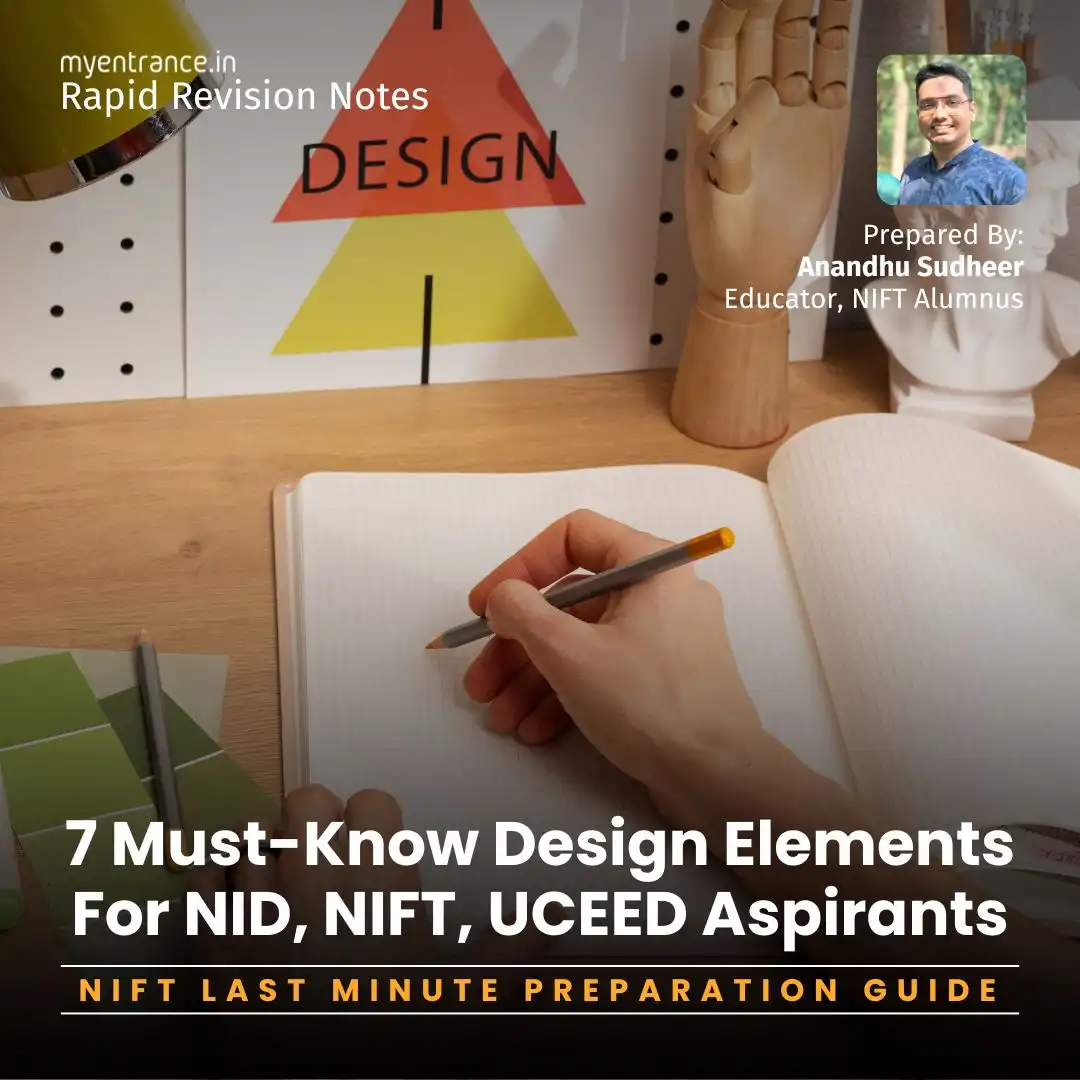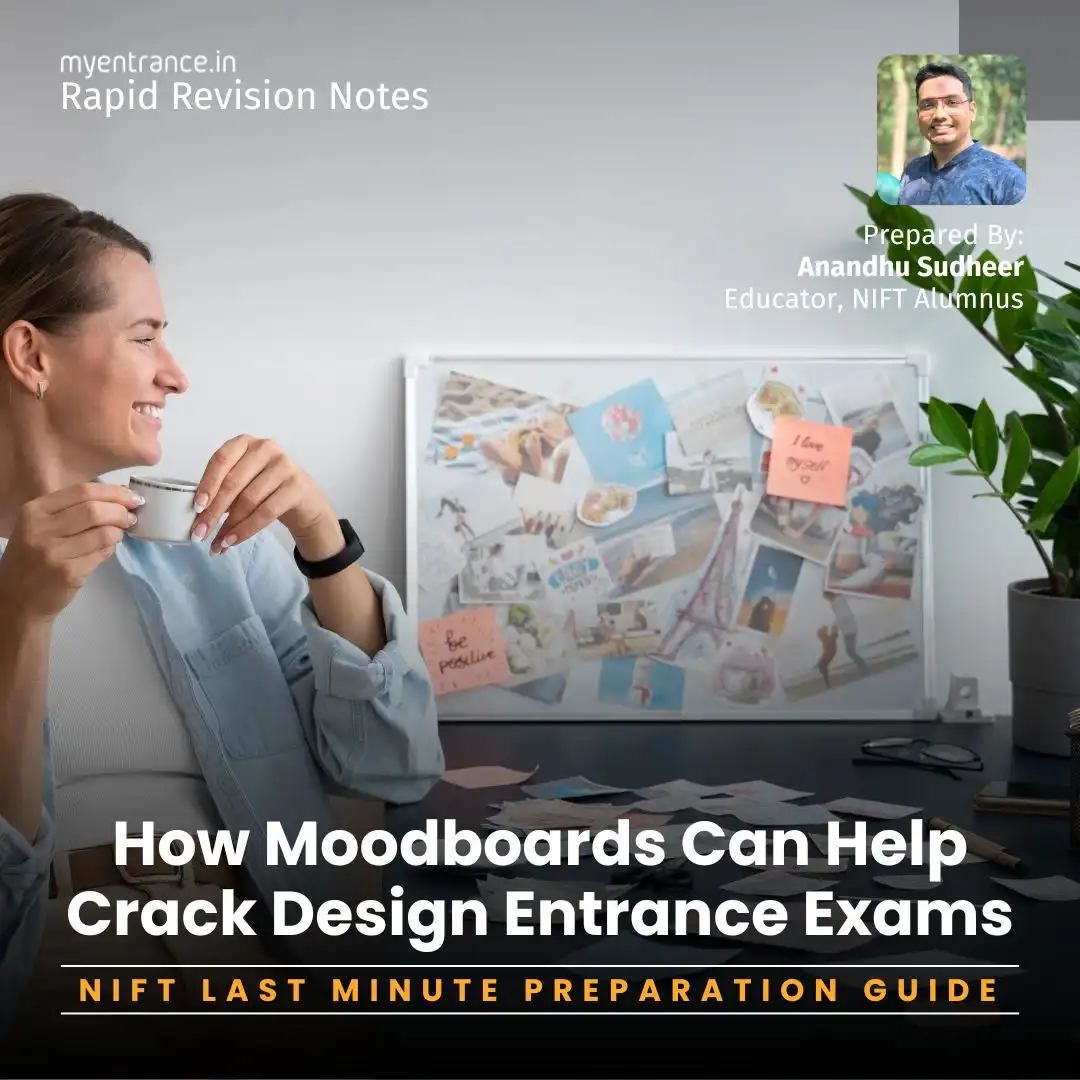Select Language
NIFT B.Des & B.F.Tech General Ability Test (GAT): Exact Exam Syllabus & Prep Tips
Are you gearing up for the NIFT B.Des/ B.F.Tech GAT? The General Ability Test (GAT) is a crucial part of the NIFT entrance exam, testing your aptitude in English, Math, Logical Reasoning, and GK. This guide, prepared by Anandhu Sudheer (NIFT Alumnus & Educator), breaks down the syllabus, important topics, and smart preparation strategies to help you score high.
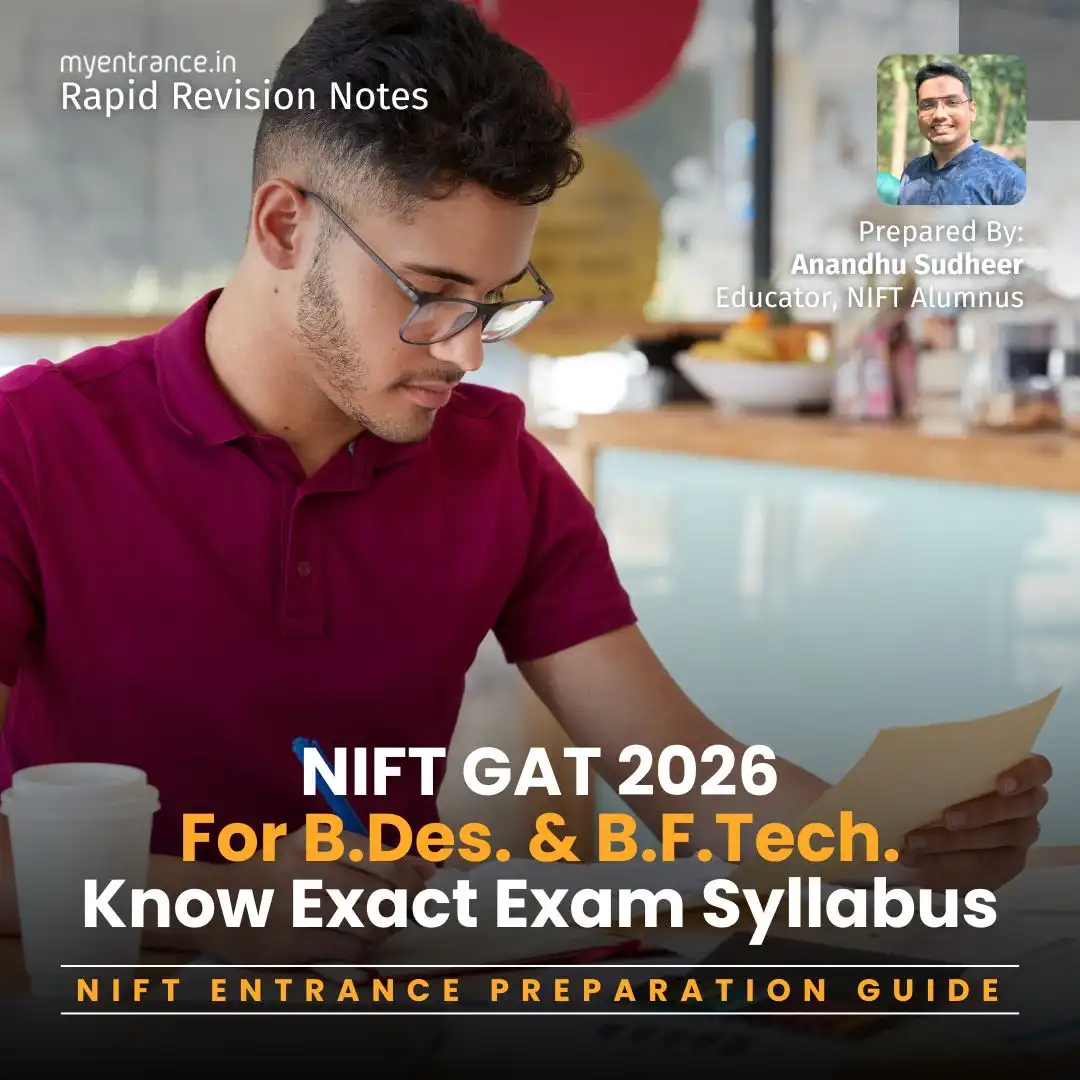
The General Ability Test (GAT) is a computer-based test (CBT) that assesses a candidate’s aptitude across multiple sections. The difficulty level and number of questions may vary slightly each year, but the core structure remains consistent.
The Entrance Examination Process (For B.Des & B.F.Tech Programmes)
All eligible candidates must appear for an entrance examination as part of the admission process. The specific requirements vary depending on the programme applied for, as outlined below.
B.Des (Bachelor of Design)
Candidates applying for undergraduate Design programmes must take an entrance examination consisting of a General Ability Test (GAT) and a Creative Ability Test (CAT). Those who qualify based on their entrance exam scores will proceed to a Situation Test, which is the next stage in the selection process.
B.F.Tech (Bachelor of Fashion Technology)
For the undergraduate Fashion Technology programme, candidates are required to appear only for the General Ability Test (GAT). Shortlisting for admission is based solely on the GAT scores.
B.F.Tech & B.Des (Dual Application)
Candidates applying for both programmes must take the General Ability Test (GAT) along with the Creative Ability Test (CAT). Two separate Common Merit Ranks (CMRs) will be generated—one for B.Des and another for B.F.Tech. B.Des candidates who qualify will also need to appear for the Situation Test.
Additionally, candidates applying for B.F.Tech (with Maths) have the option to enroll for B.Des courses by taking the CAT along with the GAT. However, this provision does not apply to the NIFT Lateral Entry Admission (NLEA).
This structured examination process ensures that candidates are evaluated based on their aptitude, creativity, and subject-specific skills, depending on their chosen programme.
Analysis of Entrance Examinations Structure for B.Des. and B.F.Tech Programs
1. Test Components
GAT – Section A (CBT): Common for both B.Des. and B.F.Tech candidates.
GAT – Section B (CBT): Additional section for B.F.Tech candidates or those opting for both programs.
Creative Ability Test (CAT): Additional test for B.Des. candidates (mentioned in the note but not detailed in the table).
2. Test Structure
Section A (Common for B.Des. and B.F.Tech)
Duration: 120 minutes
Total Questions: 100
Sections:
Communication Ability and English Comprehension: 40 questions
Quantitative Ability: 20 questions
Analytical & Logical Ability: 15 questions
General Knowledge and Current Affairs: 25 questions
Section B (For B.F.Tech or Dual Applicants)
Duration: 60 minutes
Total Questions: 50
Sections:
Quantitative Ability: 15 questions
Analytical & Logical Ability: 15 questions
Case Study: 20 questions
3. Language and Mode
Language: English or Hindi
Mode: Computer-Based Test (CBT)
4. Examination Combinations
Only B.F.Tech: Section A + Section B
Only B.Des: Section A + CAT
Both B.F.Tech and B.Des: Section A + Section B + CAT
5. Key Notes
The number of questions and difficulty level may vary annually.
Section A focuses on general aptitude, while Section B emphasizes quantitative, analytical, and case-study skills.
Final Words: Smart Work > Hard Work!
Instead of studying randomly, focus on high-scoring sections, take timed tests, and track progress. For most predicted questions, topic-wise quizzes, and expert strategies, visit MyEntrance.in today!
Sample NIFT GAT Questions & Answers (2026)
Here are 5 questions from different sections of the NIFT GAT exam, along with explanations:
1. English Comprehension
Q: Choose the correct synonym for “Ephemeral”:
A) Permanent
B) Temporary
C) Eternal
D) Lasting
Answer: B) Temporary
Explanation: “Ephemeral” means short-lived, making “temporary” the correct synonym.
2. Quantitative Ability
Q: If a shirt is sold at a 20% discount for ₹800, what was its original price?
A) ₹1,000
B) ₹960
C) ₹1,200
D) ₹1,040
Answer: A) ₹1,000
Explanation:
Discounted price = 80% of original price
Let original price = X
0.8X = ₹800 → X = ₹1,000
3. Analytical & Logical Reasoning
Q: Complete the series: 2, 5, 10, 17, 26, ?
A) 35
B) 37
C) 38
D) 40
Answer: B) 37
Explanation:
Pattern: +3, +5, +7, +9, +11
26 + 11 = 37
4. General Knowledge (Fashion & Current Affairs)
Q: Who is the current Chairperson of NIFT (2026)?
A) Ritu Beri
B) Sunil Sethi
C) Rajeev Samant
D) Check MyEntrance.in for latest updates
Answer: D) Check MyEntrance.in for latest updates
Why? NIFT chairperson changes periodically. Always refer to updated GK sources before the exam!
5. Case Study (B.F.Tech Section)
Scenario: A fashion brand’s sales dropped despite good designs. Possible reasons?
A) Poor marketing
B) High pricing
C) Strong competition
D) All of the above
Answer: D) All of the above
Explanation: Case studies test multi-dimensional thinking. All factors can impact sales.
Where to Find NIFT GAT Questions?
🔹 MyEntrance.in’s NIFT Most Predicted Questions (3000+ solved MCQs) with Instant Solutions.
🔹 Daily Current Affairs by MyEntrance.
🔹 Mock Tests with Instant Solutions
💡 Pro Tip: Practice 10-15 questions daily from each section for best results!
Most Predicted GAT Questions & Detailed Answers
Comprehensive study materials, Expert-guided tips & tricks, Mock tests and instant results.
Start your Design journey today with MyEntrance, your ultimate online coaching platform.
